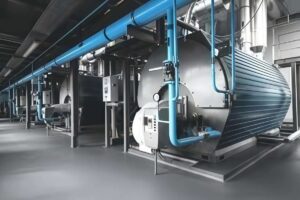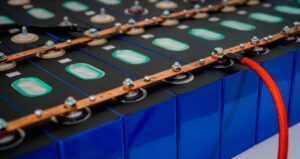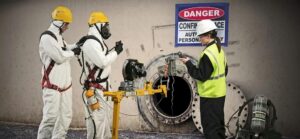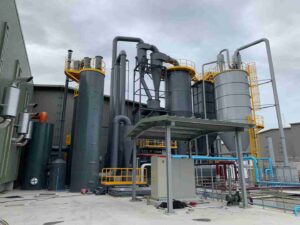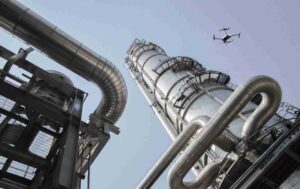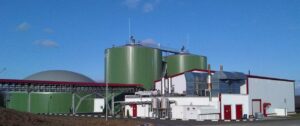Careful selection ensures you get a laser portable methane detector always. Let’s, enhance safety of your workplace.
Do you need dependable protection for dangerous environments in your daily work routine? The guide provides a detailed method to help users pick the correct laser portable methane detector.
Readers will get critical information along with important selection advice. Buying a laser portable methane detector demands careful analysis from potential buyers. Understand essential features to make better decisions before purchasing and employing equipment.
What Defines a Top-Tier Laser Portable Methane Detector?
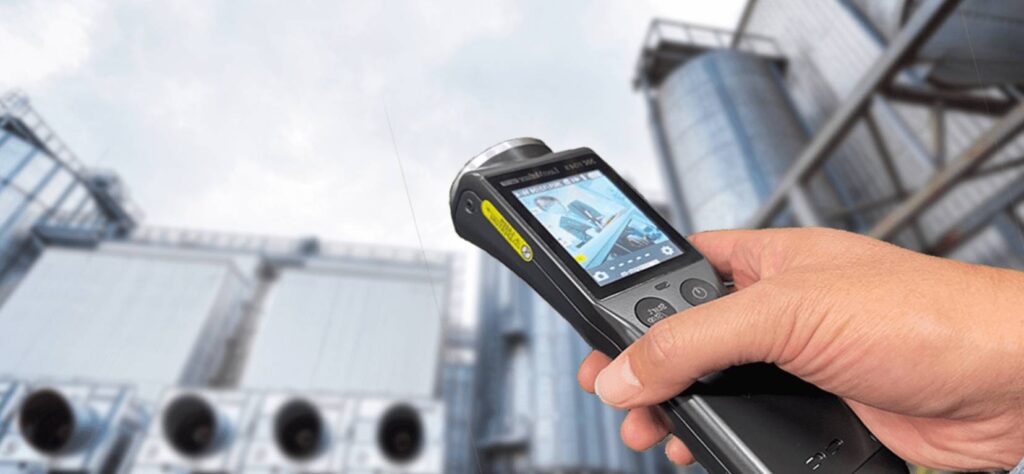
The best device will use an infrared beam. You can expect a very rapid response time of 0.1 seconds. The highly sensitive photo diode ensures accurate readings quickly. Internal pumps will draw air at 500 ml each minute. Moreover, a device with a clear LCD is easy to read.
A durable lithium-ion battery of 3.7V is also important. Most casings might feature strong and reliable ABS type plastic. Operating frequencies are often around 1.65 micrometers for methane.
A superior laser portable methane detector provides reliable readings consistently. Having understood the basics, let’s explore specific features.
What Key Features Should You Be Looking For?
• T90 Response
T90 response indicates how quickly a sensor reacts to gas. You should prioritize devices with rapid alert capabilities indeed. A fast T90 response time, under two seconds, is ideal. So, this speed is crucial for ensuring quick safety interventions. The internal sensor detects the presence of methane gas rapidly.
Moreover, the alarm will alert you almost instantaneously to danger. The digital display also updates very fast with current readings. Fast processing speed from the microcontroller is also super important. A quick laser portable methane detector can save your valuable life. The optical lenses help with that fast response time.
• ATEX Certification
ATEX certification confirms suitability for use in potentially explosive atmospheres. Your personal safety depends heavily upon using certified equipment only. ATEX ensures safe operation within hazardous industrial type environments. Zone 1 approval is a key indicator of high safety. Moreover, you should verify the presence of certification markings carefully.
For example, “II 2G Ex ib” indicates intrinsic safety. The special enclosure is designed to fully prevent any ignitions. And so, confirm the testing results of all individual components too. A certified laser portable methane detector ensures your operational safety. An internal sensor will check and alert if any problems.
• Ppm Range
Ppm range defines the measurable concentration limits of the device. You will probably need broad detection capabilities for flexibility too. A measuring range starting from 1 up to 10000 ppm works. This broad range helps detect both tiny and large leaks.
Consequently, higher measurement ranges help detect those larger, dangerous leaks. Choosing a suitable detection spectrum enhances your safety. You may need spectral range for detecting particular gas types. A resolution down to just 1 ppm guarantees measurement accuracy. The sensor within reads even the very lowest gas levels. The display is very clear and simple to read.
• IP67 Rating
IP67 rating indicates strong protection against dust and water. Choose the correct enclosure to guarantee protection from everything there. An IP67-rated device can withstand even harsh environmental conditions fully. Water submersion protection is a very important safety factor.
Dust cannot enter the device and damage the internal parts. The seals will protect all the critical internal components inside. All connectors on the casing will remain dry and very clean. A well-designed laser portable methane detector will survive some accidental drops. And, impact resistance is very important when choosing this device.
• -40°C/+60°C
-40°C/+60°C ratings specify the device’s operational temperature limits clearly here. Verify the operating temperature specifications to match your working environment. Extreme cold environments require specially designed internal electronic components too.
High heat can also present many operational challenges to devices. Battery performance can change dramatically depending upon the temperature also. Internal components have to withstand extreme hot and cold ranges. The LCD screen is designed to operate within ranges. Sensor stability is also incredibly important within extreme temperature ranges.
| Feature | Specification | Unit | Importance Level | Technology Principle | Typical Range | Power Source | Operational Temp (°C) |
| Gas Detected | Methane (CH4) | %LEL, ppm | 1 (Highest) | TDLAS | 0-100% LEL, 0-10,000 ppm | Rechargeable Li-ion | -40 to +60 |
| Response Time(T90) | <1, <2, <5 | Seconds (s) | 1 (Highest) | Open-path laser | <2 s (Typical) | 3.7V | 270 min |
| Ingress Protection Rating | IP65, IP67, IP68 | IEC 60529 standard | 1 (Highest) | Sealed Optics, robust housing | Dust/Water Proof | 10 Wh Capacity | 10-95% RH(non-cond) |
| Intrinsic Safety Cert. | ATEX, IECEx, UL913 | Zone/Class/Div | 1 (Highest) | Flameproof Enclosure | Zone 0, 1, 2 | 1,200 mAh | -40 to +60 |
| Detection Path Length | 0.5 – 50 | Meter (m) | 2 (High) | Backscatter, WMS | 1 – 100,000 ppm.m | >8 h | -20 to +50 |
| Measurement Accuracy | ±10, ±5, ±2 | % Reading | 1 (Highest) | Dual gas reference | Reading Dependent | 5V USB | +5 to +40 |
| Alarm Indicators | Visual,Auditory,Vibrating | dB, LED Color, Hz | 1 (Highest) | Threshold Setting, Microcontroller | Configurable, Multiple | 300+ cycles | -30 to +55 |
Table On The Key Features Of A Laser Portable Methane Detector!
Tips on Selecting the Correct Measurement Range!
• 0-10,000 ppm
A gas detection range between 0 to 10,000 ppm gives users extensive control over their detection capabilities. Your safety heavily depends on making the correct choice in range selection. You should need that wide of a gas detection range. This span will cover many different leak detection operational scenarios. Even very small leaks are easily detected with this range.
Larger leaks will also be easily covered within that range. A laser portable methane detector works well in many situations. The sensor inside detects different concentrations of methane gas easily. The internal processor will calculate everything accurately and fast.
• 0-100% LEL
0-100% LEL scale measures the flammability risk of the methane. You will ensure complete explosion safety with this measurement scale. For instance, a 50% LEL reading should trigger a warning alarm. A 100% LEL reading indicates an extremely dangerous explosion risk.
The sensor accurately measures the flammability risk of present gas. The processor calculates the lower explosive limits of methane. And, a laser portable methane detector actively prevents potential deadly disasters. Alarms will then activate at those pre-set certain concentration points. The display will show very clear percentage values constantly.
• 0-100% Volume
0-100% Volume readings show the percentage of methane in air. You can track potential high methane displacement with these readings. This measurement is useful for showing oxygen deprivation danger too. High volume of methane will replace the breathable oxygen levels.
The detector will measure the total methane content in volume. The internal processor calculates the volume ratios of gas. A quality laser portable methane detector will track all those dangers. Furthermore, alarms will indicate if unsafe conditions are present quickly.
• ppm.m
Ppm.m units represent path-integrated measurements of methane gas. You can use this measurement for determining total gas presence. This can help assess the risk levels within larger areas. Longer paths need this type of measurement for total assessment.
So, the internal detector calculates the overall exposure using math. The internal processor will handle all of the complex math. The display should present a total column density of gas. Finally, data logging systems will record all of those historical readings.
How Does Laser Technology Improve Methane Detection?
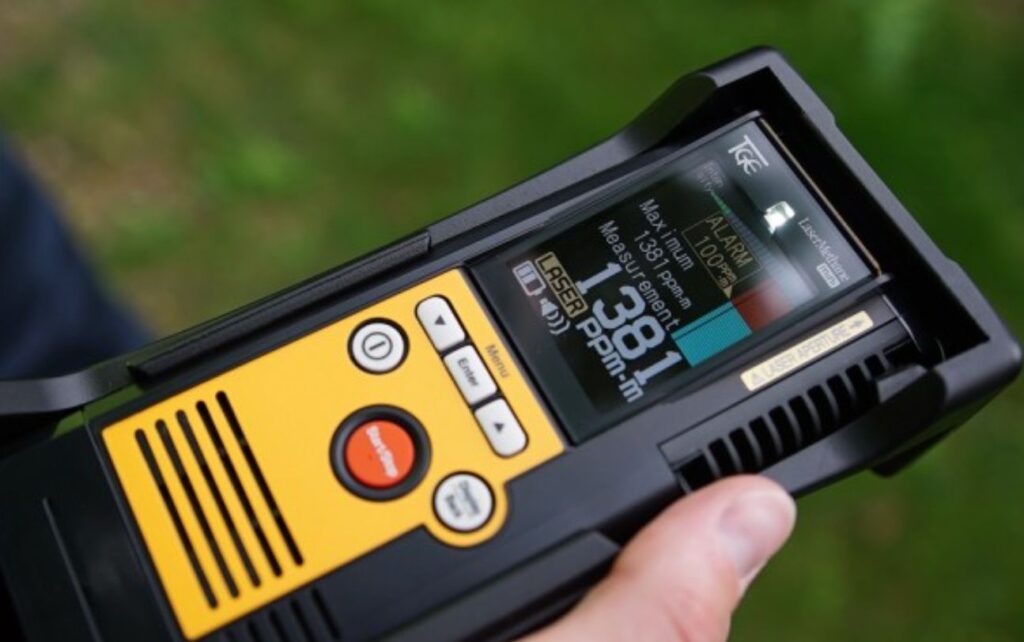
• TDLAS Principle
The TDLAS Principle also known as Tunable Diode Laser Absorption Spectroscopy operates with exceptional results. The advanced TDLAS technology provides you with unique gas detection capabilities. The internal laser emits a very narrow bandwidth of light.
Methane will absorb this specific wavelength of the emitted light. Other gases present will not cause any reading interference there. The detector will measure the light reduction caused by gas. A high-quality l methane detection system offers unmatched gas specificity. The internal photodiode detects even those very faint light signals.
• Wavelength Specificity
The wavelength-specific feature helps produce accurate measurements which prevents incorrect readings from occurring. With this latest development you easily avoid unnecessary wrong readings. As methane will only absorb light at around 1.65 micrometers.
Other various gases do not interfere at that same wavelength. The internal laser targets only one particular type of molecule. The detector will ignore all other present gas compounds. A carefully chosen laser portable methane detector gives you precision. The internal sensor will only detect that pure signal.
• Single-Path Measurement
Single-Path measurement simplifies the optical design for improved reliability here. You will certainly enhance reliability and also speed with this, as light will travel directly to the sensor from the source. There are very few optical components needed for this design.
Fewer parts inside mean fewer potential points of failure. The detector will respond very quickly to gas presence. The internal processor requires very minimal data correction. And, the optical beam alignment is incredibly simple with this.
• Optical Absorption
Optical absorption principles underpin accurate and reliable methane gas measurements. You get very accurate gas measurements by using absorption principles. Methane molecules absorb the special laser’s emitted infrared light energy. More gas present means less total light will reach sensor.
The internal detector accurately measures this light reduction carefully. A laser portable methane detector employs the basic laws of physics. Periodic calibration will ensure your perfect measurement accuracy.
Best Laser Portable Methane Detector Calibration Practices!
• Span Gas
Span gas, with a known methane concentration, adjusts the sensitivity. You use span gas to ensure correct gas concentration readings. Use a certified and traceable methane gas concentration for spanning. The detector compares its readings to this known standard.
The internal processor will adjust the response curve accordingly. A properly calibrated laser portable methane detector remains consistently accurate.
• Zero Gas
Zero gas, like pure nitrogen, establishes a clean baseline reading. You can remove any background interference using a zero gas. Use pure nitrogen, or clean air, for the zero process.
The internal detector establishes its zero point with this. The internal processor can then correct for any drift. A well-maintained laser portable methane detector avoids all measurement errors. And, you should perform the zeroing process in clean air.
• Bump Test
Bump Test, a quick functional check, confirms basic alarm operation. You will be confirming basic alarm operation with a bump. Apply a small amount of gas to perform the test.
You will check for a proper alarm system response there. The detector needs to react quickly to the presence. A laser portable methane detector should pass a bump test. Conducting these tests before each use is highly recommended.
• Calibration Records
Calibration Records provide essential documentation for traceability and compliance. You will ensure traceability, and compliance, by keeping good records. You must record the dates, the gases used, and results. Note any adjustments that were made to the instrument also.
The detector’s full operational history is then readily available. Audits will require complete documentation of the calibration performed. You should keep all of those records in a secure place. After calibration, choosing the right supplier also matters considerably.
How Does Calibration Impact LPMD Accuracy?
• NIST Traceability
NIST Traceability confirms the calibration’s link to national metrology standards. Verify national standards compliance before purchasing the equipment you needed.
Your chosen instruments must be directly linked to NIST. Calibration labs will often use standard and traceable reference materials. A calibrated laser portable methane detector maintains that essential accuracy level. This essential traceability ensures your inter-comparability of multiple devices.
• Span Gas
Span Gas concentration directly impacts measurement values during regular adjustments. Regular checks with span gas affect the reading’s accuracy.
Use, a traceable reference cylinder for spanning devices. A laser portable methane detector needs proper spanning for accuracy. Sensor sensitivity will drift slowly over a period of time. Proper measurement accuracy requires regular and periodic recalibration.
• Zero Gas
Zero Gas ensures a clean baseline, removing any signal interference truly. The baseline accuracy of the instrument is very important. You should zeroing to remove all those signal interferences.
The detector needs zero gas to remove any reading offsets. And, offsets will cause different measurement errors to show up. You will get real baseline readings from that process.
• Calibration Frequency
Manufacturer-specified calibration frequency enables long-term accurate performance of the instrument. Regular inspection of your device prevents accuracy decline throughout its operational life.
The internal sensors will tend to drift slowly over long time. A laser portable methane detector will need these periodic calibrations often. However, harsh environmental conditions may require much more frequent calibrations.
• Bump Test
Bump Test quickly verifies if detector is functioning and safe. This quick check will ensure your detector is working. A brief exposure to the target gas is what’s needed. Alarms and the readings must respond appropriately to gas. Sensors can indeed fail without giving any advance type warnings.
Selecting a Laser Portable Methane Detector Supplier!
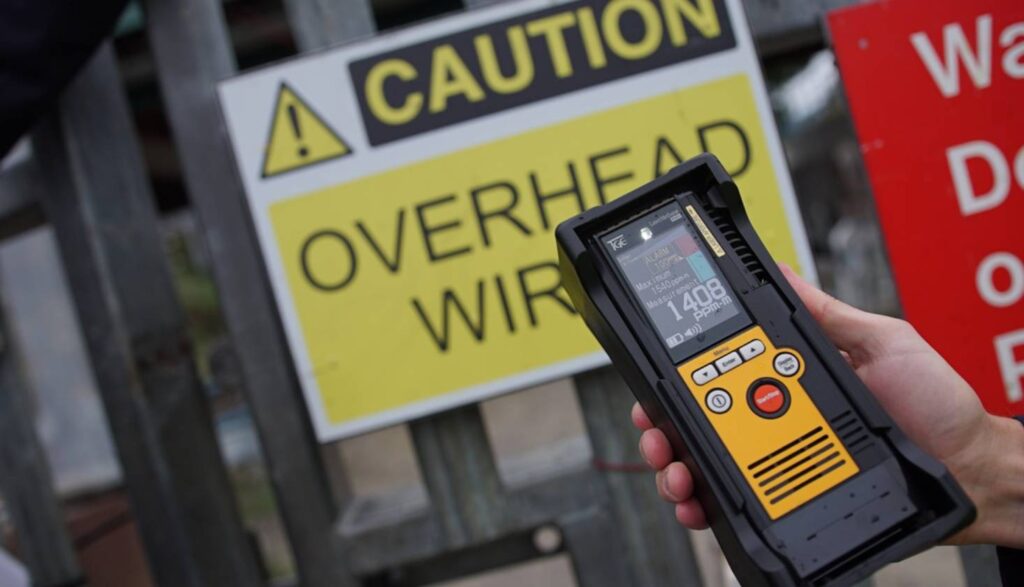
• ISO Certified
Suppliers who hold ISO certification follow exacting requirements from the quality management system standards. You should select a source holding ISO certification to guarantee consistent quality will be available. The ISO 9001 certification stands as an assurance to maintain constant production standards.
Verify if the certification remains active at the current time. A laser portable methane detector from them will meet specs. Their manufacturing processes are usually carefully controlled and documented often.
• 24/7 Support
24/7 Support ensures immediate assistance with any technical issues or problems. Consider continuous support availability when you make your purchase decision. You will gain immediate help if there are any problems. Technical experts can answer all your operational type questions fast.
And so, troubleshooting will become very fast and very simple. A laser portable methane detector may require occasional technical system support. Replacement parts will ship without any long and costly delays.
• Warranty Period
Warranty period reflects the manufacturer’s confidence in their product’s durability. You will reduce financial risks and expenses with a warranty. A longer warranty period indicates higher product quality and confidence. So, check all of the coverage terms and the duration carefully.
A laser portable methane detector requires protection against unexpected part failures. Repairs should be performed at absolutely no cost to you. Finally, understand all of the warranty limitations before making purchases.
• OEM Approved
OEM approved parts ensure compatibility and optimal performance with instruments. Consider the manufacturer recommendations when purchasing extra needed replacement parts.
Original equipment approval is the very best option there. The compatible parts will work correctly with the instrument. Your device will perform exactly as originally intended. A properly maintained laser portable methane detector will remain safe. Using third-party parts can cause potential performance problems to occur.
Conclusion
Selecting a suitable gas detector requires careful thought and attention. Key considerations are range, certifications, calibrations, and also supplier support. Thus, regular maintenance guarantees optimal and safe long-term performance always. Prioritize these critical factors when purchasing a device always here. A dependable laser portable methane detector safeguards against invisible dangers. For expert product guidance, explore the resources at GAS-ANALYSER.





